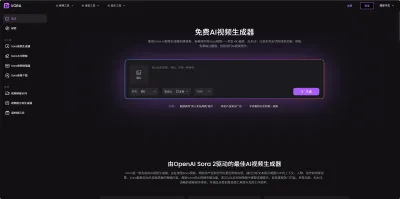
Overview
Drogon is a C++17/20 based HTTP application framework. Drogon can be used to easily build various types of web application server programs using C++. Drogon is the name of a dragon in the American TV series "Game of Thrones" that I really like.
Drogon is a cross-platform framework, It supports Linux, macOS, FreeBSD, OpenBSD, HaikuOS, and Windows. Its main features are as follows:
- Use a non-blocking I/O network lib based on epoll (kqueue under macOS/FreeBSD) to provide high-concurrency, high-performance network IO, please visit the TFB Tests Results for more details;
- Provide a completely asynchronous programming mode;
- Support Http1.0/1.1 (server side and client side);
- Based on template, a simple reflection mechanism is implemented to completely decouple the main program framework, controllers and views.
- Support cookies and built-in sessions;
- Support back-end rendering, the controller generates the data to the view to generate the Html page. Views are described by CSP template files, C++ codes are embedded into Html pages through CSP tags. And the drogon command-line tool automatically generates the C++ code files for compilation;
- Support view page dynamic loading (dynamic compilation and loading at runtime);
- Provide a convenient and flexible routing solution from the path to the controller handler;
- Support filter chains to facilitate the execution of unified logic (such as login verification, Http Method constraint verification, etc.) before handling HTTP requests;
- Support https (based on OpenSSL);
- Support WebSocket (server side and client side);
- Support JSON format request and response, very friendly to the Restful API application development;
- Support file download and upload;
- Support gzip, brotli compression transmission;
- Support pipelining;
- Provide a lightweight command line tool, drogon_ctl, to simplify the creation of various classes in Drogon and the generation of view code;
- Support non-blocking I/O based asynchronously reading and writing database (PostgreSQL and MySQL(MariaDB) database);
- Support asynchronously reading and writing sqlite3 database based on thread pool;
- Support Redis with asynchronous reading and writing;
- Support ARM Architecture;
- Provide a convenient lightweight ORM implementation that supports for regular object-to-database bidirectional mapping;
- Support plugins which can be installed by the configuration file at load time;
- Support AOP with built-in joinpoints.
- Support C++ coroutines
A very simple example
Unlike most C++ frameworks, the main program of the drogon application can be kept clean and simple. Drogon uses a few tricks to decouple controllers from the main program. The routing settings of controllers can be done through macros or configuration file.
Below is the main program of a typical drogon application:
#include <drogon/drogon.h> using namespace drogon; int main() { app().setLogPath("./") .setLogLevel(trantor::Logger::kWarn) .addListener("0.0.0.0", 80) .setThreadNum(16) .enableRunAsDaemon() .run(); }
It can be further simplified by using configuration file as follows:
#include <drogon/drogon.h> using namespace drogon; int main() { app().loadConfigFile("./config.json").run(); }
Drogon provides some interfaces for adding controller logic directly in the main() function, for example, user can register a handler like this in Drogon:
app().registerHandler("/test?username={name}", [](const HttpRequestPtr& req, std::function<void (const HttpResponsePtr &)> &&callback, const std::string &name) { Json::Value json; json["result"]="ok"; json["message"]=std::string("hello,")+name; auto resp=HttpResponse::newHttpJsonResponse(json); callback(resp); }, {Get,"LoginFilter"});
While such interfaces look intuitive, they are not suitable for complex business logic scenarios. Assuming there are tens or even hundreds of handlers that need to be registered in the framework, isn't it a better practice to implement them separately in their respective classes? So unless your logic is very simple, we don't recommend using above interfaces. Instead, we can create an HttpSimpleController as follows:
/// The TestCtrl.h file #pragma once #include <drogon/HttpSimpleController.h> using namespace drogon; class TestCtrl:public drogon::HttpSimpleController<TestCtrl> { public: void asyncHandleHttpRequest(const HttpRequestPtr& req, std::function<void (const HttpResponsePtr &)> &&callback) override; PATH_LIST_BEGIN PATH_ADD("/test",Get); PATH_LIST_END }; /// The TestCtrl.cc file #include "TestCtrl.h" void TestCtrl::asyncHandleHttpRequest(const HttpRequestPtr& req, std::function<void (const HttpResponsePtr &)> &&callback) { //write your application logic here auto resp = HttpResponse::newHttpResponse(); resp->setBody("<p>Hello, world!</p>"); resp->setExpiredTime(0); callback(resp); }
Most of the above programs can be automatically generated by the command line tool drogon_ctl provided by drogon (The command is drogon_ctl create controller TestCtrl). All the user needs to do is add their own business logic. In the example, the controller returns a Hello, world! string when the client accesses the http://ip/test URL.
For JSON format response, we create the controller as follows:
/// The header file #pragma once #include <drogon/HttpSimpleController.h> using namespace drogon; class JsonCtrl : public drogon::HttpSimpleController<JsonCtrl> { public: void asyncHandleHttpRequest(const HttpRequestPtr &req, std::function<void(const HttpResponsePtr &)> &&callback) override; PATH_LIST_BEGIN //list path definitions here; PATH_ADD("/json", Get); PATH_LIST_END }; /// The source file #include "JsonCtrl.h" void JsonCtrl::asyncHandleHttpRequest(const HttpRequestPtr &req, std::function<void(const HttpResponsePtr &)> &&callback) { Json::Value ret; ret["message"] = "Hello, World!"; auto resp = HttpResponse::newHttpJsonResponse(ret); callback(resp); }
Let's go a step further and create a demo RESTful API with the HttpController class, as shown below (Omit the source file):
/// The header file #pragma once #include <drogon/HttpController.h> using namespace drogon; namespace api { namespace v1 { class User : public drogon::HttpController<User> { public: METHOD_LIST_BEGIN //use METHOD_ADD to add your custom processing function here; METHOD_ADD(User::getInfo, "/{id}", Get); //path is /api/v1/User/{arg1} METHOD_ADD(User::getDetailInfo, "/{id}/detailinfo", Get); //path is /api/v1/User/{arg1}/detailinfo METHOD_ADD(User::newUser, "/{name}", Post); //path is /api/v1/User/{arg1} METHOD_LIST_END //your declaration of processing function maybe like this: void getInfo(const HttpRequestPtr &req, std::function<void(const HttpResponsePtr &)> &&callback, int userId) const; void getDetailInfo(const HttpRequestPtr &req, std::function<void(const HttpResponsePtr &)> &&callback, int userId) const; void newUser(const HttpRequestPtr &req, std::function<void(const HttpResponsePtr &)> &&callback, std::string &&userName); public: User() { LOG_DEBUG << "User constructor!"; } }; } // namespace v1 } // namespace api
As you can see, users can use the HttpController to map paths and parameters at the same time. This is a very convenient way to create a RESTful API application.
In addition, you can also find that all handler interfaces are in asynchronous mode, where the response is returned by a callback object. This design is for performance reasons because in asynchronous mode the drogon application can handle a large number of concurrent requests with a small number of threads.
After compiling all of the above source files, we get a very simple web application. This is a good start. For more information, please visit the wiki
Cross-compilation
Drogon supports cross-compilation, you should define the CMAKE_SYSTEM_NAME in toolchain file, for example:
set(CMAKE_SYSTEM_NAME Linux) set(CMAKE_SYSTEM_PROCESSOR arm)
You can disable building options for examples and drogon_ctl by settings BUILD_EXAMPLES and BUILD_CTL to OFF in the toolchain file.
Building options
Drogon provides some building options, you can enable or disable them by setting the corresponding variables to ON or OFF in the cmake command line, cmake file etc...
| Option name | Description | Default value |
|---|---|---|
| BUILD_CTL | Build drogon_ctl | ON |
| BUILD_EXAMPLES | Build examples | ON |
| BUILD_ORM | Build orm | ON |
| COZ_PROFILING | Use coz for profiling | OFF |
| BUILD_SHARED_LIBS | Build drogon as a shared lib | OFF |
| BUILD_DOC | Build Doxygen documentation | OFF |
| BUILD_BROTLI | Build Brotli | ON |
| BUILD_YAML_CONFIG | Build yaml config | ON |
| USE_SUBMODULE | Use trantor as a submodule | ON |
Contributions
This project exists thanks to all the people who contribute code.
<a href="https://github.com/drogonframework/drogon/graphs/contributors"><img src="https://contributors-svg.opencollective.com/drogon/contributors.svg?width=890&button=false" alt="Code contributors" /></a>
Every contribution is welcome. Please refer to the contribution guidelines for more information.
编��辑推荐精选


Vora
免费创建高清无水印Sora视频
Vora是一个免费创建高清无水印Sora视频的AI工具


Refly.AI
最适合小白的AI自动化工作流平台
无需编码,轻松生成可复用、可变现的AI自动化工作流


酷表ChatExcel
大模型驱动的Excel数据处理工具
基于大模型交互的表格处理系统,允许用户通过对话方式完成数据整理和可视化分析。系统采用机器学习算法解析用户指令,自动执行排序、公式计算和数据透视等操作,支持多种文件格式导入导出。数据处理响应速��度保持在0.8秒以内,支持超过100万行数据的即时分析。


TRAE编程
AI辅助编程,代码自动修复
Trae是一种自适应的集成开发环境(IDE),通过自动化和多元协作改变开发流程。利用Trae,团队能够更快速、精确地编写和部署代码,从而提高编程效率和项目交付速度。Trae具备上下文感知和代码自动完成功能,是提升开发效率的理想工具。


AIWritePaper论文写作
AI论文写作指导�平台
AIWritePaper论文写作是一站式AI论文写作辅助工具,简化了选题、文献检索至论文撰写的整个过程。通过简单设定,平台可快速生成高质量论文大纲和全文,配合图表、参考文献等一应俱全,同时提供开题报告和答辩PPT等增值服务,保障数据安全,有效提升写作效率和论文质量。


博思AIPPT
AI一键生成PPT,就用博思AIPPT!
博思AIPPT,新一代的AI生成PPT平台,支持智能生成PPT、AI美化PPT、文本&链接生成PPT、导入Word/PDF/Markdown文档生成PPT等,内置海量精美PPT模板,涵盖商务、教育、科技等不同风格,同时针对每个页面提供多种版式,一键自适应切换,完美适配各种办公场景。


潮际好麦
AI赋能电商视觉革命,一站式智能商拍平台
潮际好麦深耕服装行业,是国内AI试衣效果最好的软件。使用先进AIGC能力为电商卖家批量提供优质的、低成本的商拍图。合作品牌有Shein、Lazada、安踏、百丽等65个国内外头部品牌,以及国内10万+淘宝、天猫、京东等主流平台的品牌商家,为卖家节省将近85%的出图成本,提升约3倍出图效率,让品牌能够快速上架。


iTerms
企业专属的AI法律顾问
iTerms是法大大集团旗下法律子品牌,基于最先进的大语言模型(LLM)、专业的法律知识库和强大的智能体架构,帮助企业扫清合规障碍,筑牢风控防线,成为您企业专属的AI法律顾问。


SimilarWeb流量提升
稳定高效的流量提升解决方案,助力品牌曝光
稳定高效的流量提升解决方案,助力品牌曝光


Sora2视频免费生成
最新版Sora2模型免费使用,一键生成无水印视频
最新版Sora2模型免费使用,一键生成无水印视频
推荐工具精选
AI云服务特惠
懂AI专属折扣关注微信公众号
最新AI工具、AI资讯
独家AI资源、AI项目落地

微信扫一扫关注公众号









